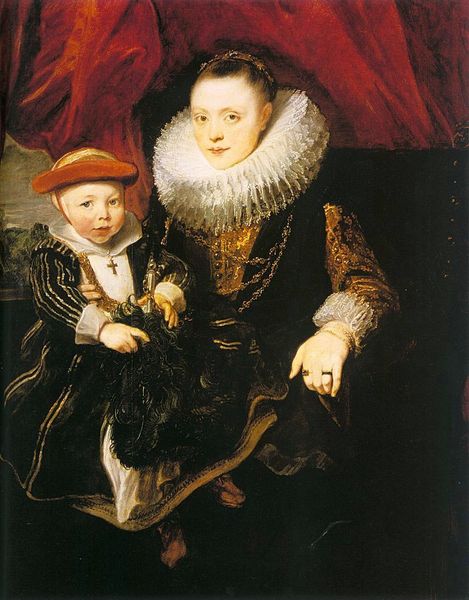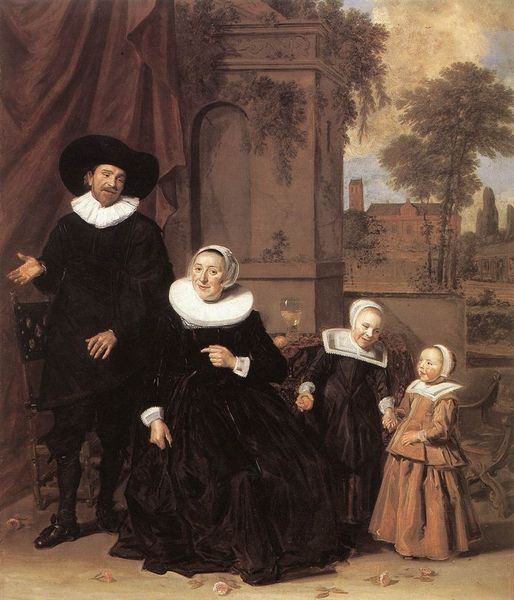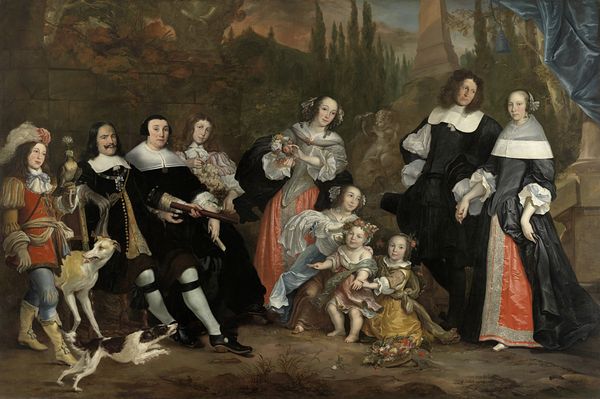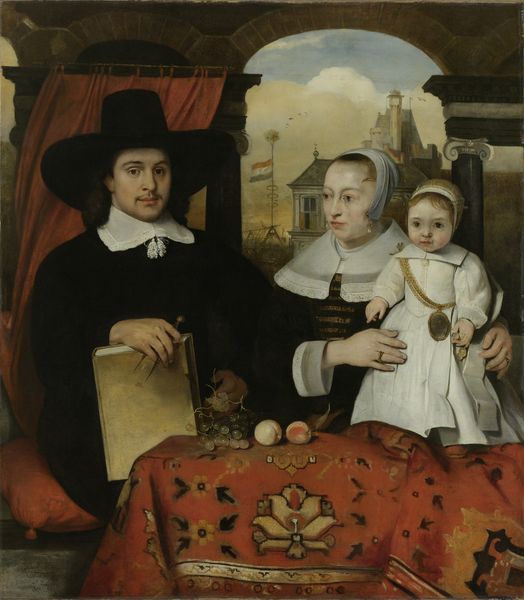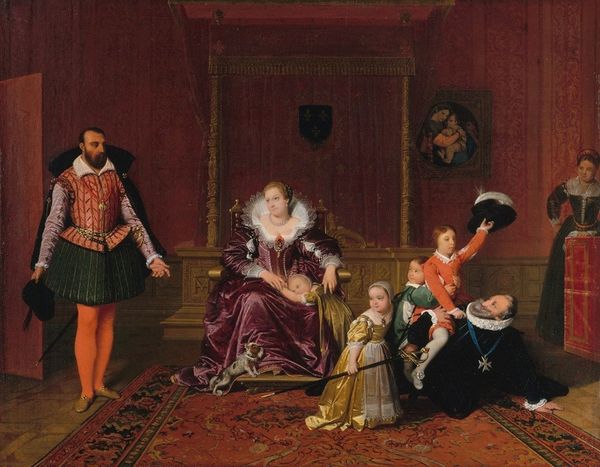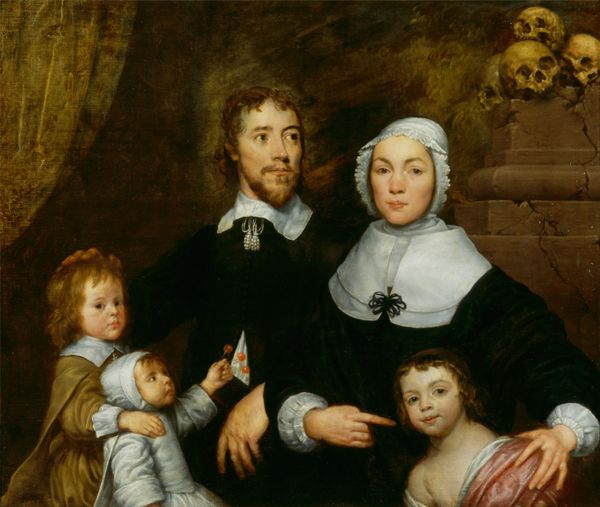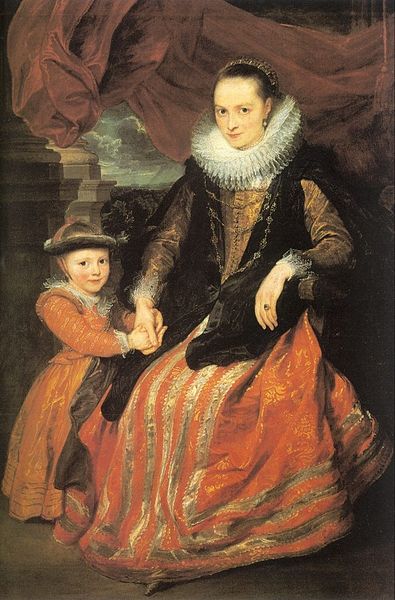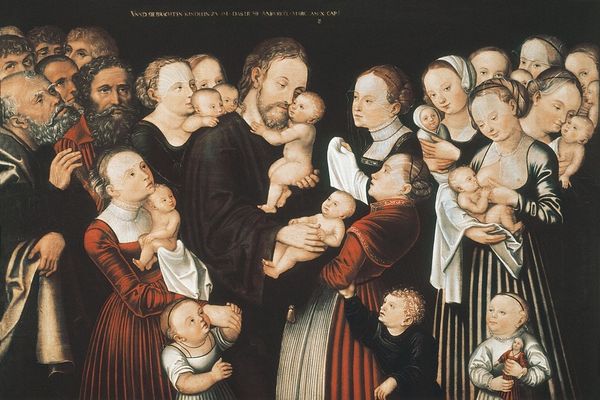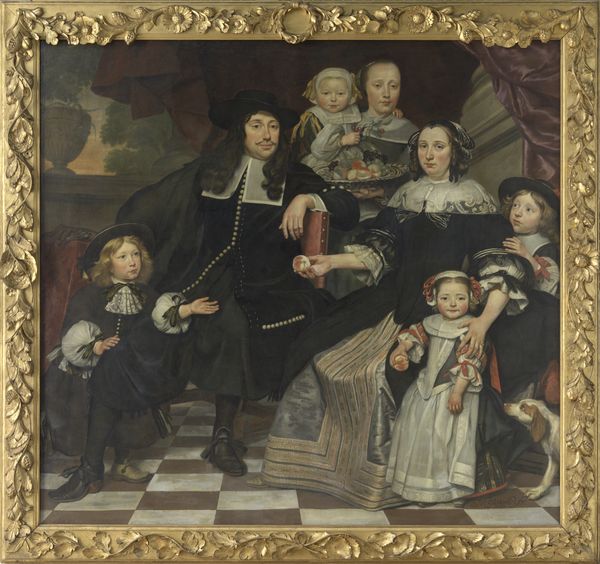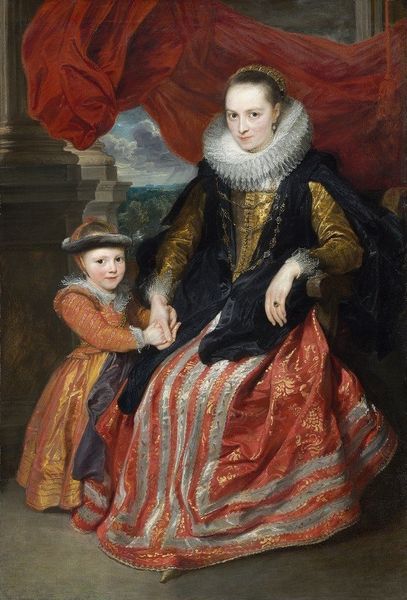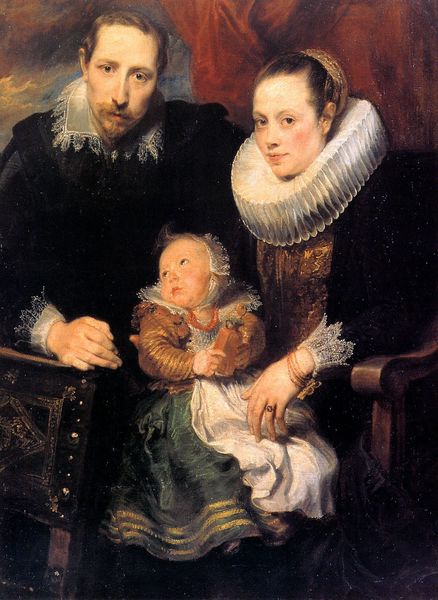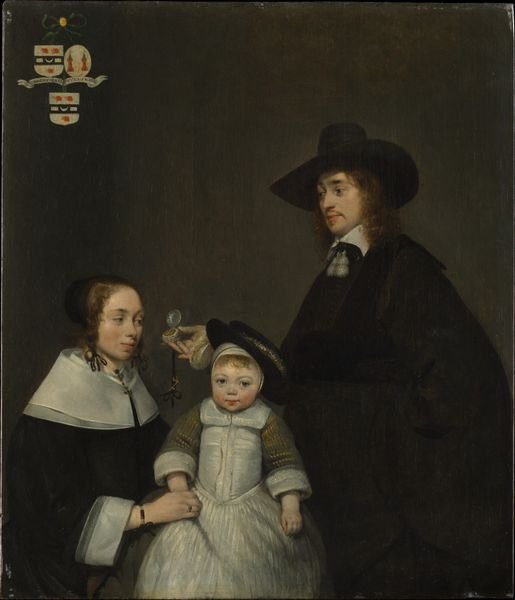
painting, oil-paint
#
portrait
#
painting
#
oil-paint
#
mannerism
#
group-portraits
#
genre-painting
#
history-painting
Copyright: Public domain
Curator: This is "Portrait of Antonius Anselmus, His Wife and Their Children" painted in 1577 by Maarten de Vos. A beautiful example of a family portrait from the late Renaissance. Editor: My first impression is that there's a palpable stiffness to this family group, wouldn't you agree? They seem so self-aware, almost posing rather than inhabiting a shared space. Curator: Absolutely. De Vos was working within a very specific cultural framework; these commissioned portraits were essentially status symbols. Displaying wealth, piety, and lineage were essential. Editor: Right, that emphasis on wealth is visually compelling. The lace, the rings, the very still-life arrangement of documents and gold. There's a story being told through these material details. But what of the imagery here? Curator: Well, the arrangement speaks volumes about social structure. The father is presented as the clear patriarch, while the mother holds their youngest. We see how this painting depicts a man inheriting goods across a single patrilineal line. It highlights issues of lineage, class, and the economic context that defined people's identities. Editor: And that intense gaze! Is it me, or is there a deep concern conveyed through the child’s expressions. Could we interpret this as the future or lack thereof? Curator: Perhaps that is one valid interpretation, however, within this particular context, portraying children, especially heirs, was almost mandatory. And if we delve into social art history here we discover paintings from the era were less about realism and more about symbolism. Every choice, from attire to placement, was carefully chosen. Editor: Interesting. Even something as simple as the flower arrangement can be symbolic—a meditation on fleeting beauty perhaps, considering that still life traditions had roots as memento mori in the early 16th Century. But it could just as easily reference social status too, you are right, I concede. Curator: Exactly. It's a rich tapestry woven with social codes and artistic conventions. To consider contemporary dialogues, these very modes of commissioning a portrait would now, for many artists, raise challenging questions regarding art’s purpose. Editor: Indeed, such contrasts highlight the complexities embedded in viewing historical art. Every symbol we read reshapes the image. Curator: A fascinating insight, let us move onto the next masterpiece, then.
Comments
No comments
Be the first to comment and join the conversation on the ultimate creative platform.
